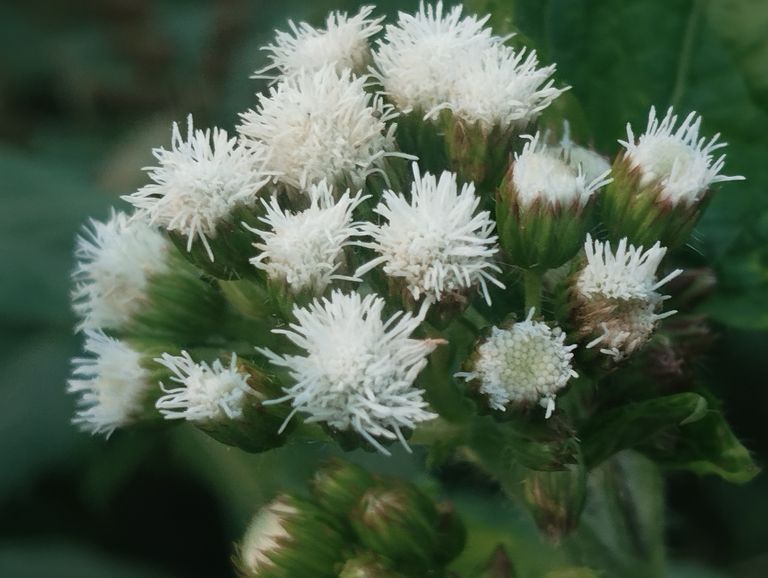
The Beauty of Wildflowers.
Wildflowers, often overlooked in favor of cultivated gardens and ornamental plants, hold an untamed charm that speaks to the soul. These vibrant blossoms, thriving in meadows, forests, and roadsides, are nature's masterpieces—painted with colors and patterns that no human hand can replicate. Their beauty lies not only in their aesthetic appeal but also in their resilience and ecological significance.
The Unassuming Elegance
Unlike garden flowers, wildflowers grow without human intervention, making their presence a delightful surprise. Picture a field bathed in the golden hues of sunflowers, or a hillside carpeted with the delicate blues of forget-me-nots. Wildflowers do not demand attention but quietly transform landscapes into breathtaking canvases. Their simplicity is their strength, reminding us that beauty often resides in the unassuming.
Colors That Speak
Wildflowers come in an array of colors, each more vibrant than the last. The golden yellows of dandelions, the deep purples of violets, and the fiery reds of poppies create a palette that rivals the most skillful artist’s work. These colors are not merely for show—they serve a purpose, attracting pollinators like bees and butterflies, ensuring the cycle of life continues.
Resilience and Survival
One of the most remarkable traits of wildflowers is their ability to thrive in harsh conditions. They bloom in deserts, rocky terrains, and even in the cracks of urban sidewalks. Their resilience is a lesson in adaptation and survival, showing us how to find beauty in adversity.
Wildflowers and Ecosystems
Beyond their visual appeal, wildflowers play a critical role in ecosystems. They provide food and shelter for countless species of insects, birds, and small mammals. Pollinators such as bees rely heavily on wildflowers for nectar, making these blooms essential for the survival of many crops and natural vegetation.
A Source of Inspiration
Throughout history, wildflowers have inspired poets, painters, and philosophers. From William Wordsworth’s famous ode to the daffodils to Van Gogh’s sunflower series, wildflowers have been a muse for creative minds. Their transient nature reminds us of life’s fleeting beauty, urging us to cherish every moment.
The Cultural Significance
In many cultures, wildflowers hold symbolic meanings. Daisies, for example, represent innocence and purity, while lavender signifies calmness and devotion. Wildflowers also play roles in traditional medicines, teas, and dyes, showcasing their utility beyond aesthetics.
Preserving Wildflower Habitats
As urbanization and agricultural expansion threaten natural habitats, the preservation of wildflower meadows becomes crucial. Planting native wildflowers in gardens and supporting conservation efforts can ensure that future generations experience their beauty. By appreciating and protecting these blooms, we contribute to the health of our planet.
Conclusion
The beauty of wildflowers lies in their natural, untamed existence. They remind us that life does not need to be cultivated or controlled to be beautiful. As we walk past a field of wildflowers or notice a single bloom thriving against all odds, we are reminded of the resilience, vibrancy, and quiet strength of nature. Let us pause to admire these wonders and embrace the lessons they teach.
Wildflowers, in their unassuming elegance, connect us to the wilderness within and around us—a timeless symbol of life’s enduring beauty.
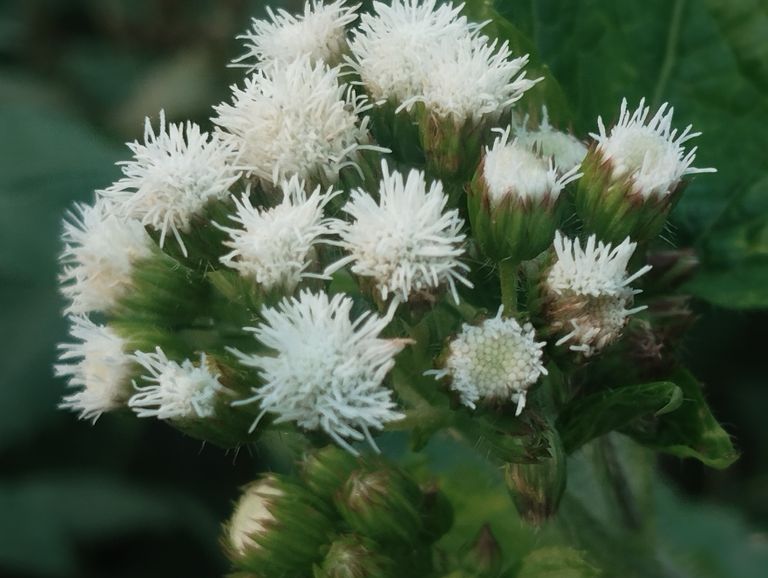
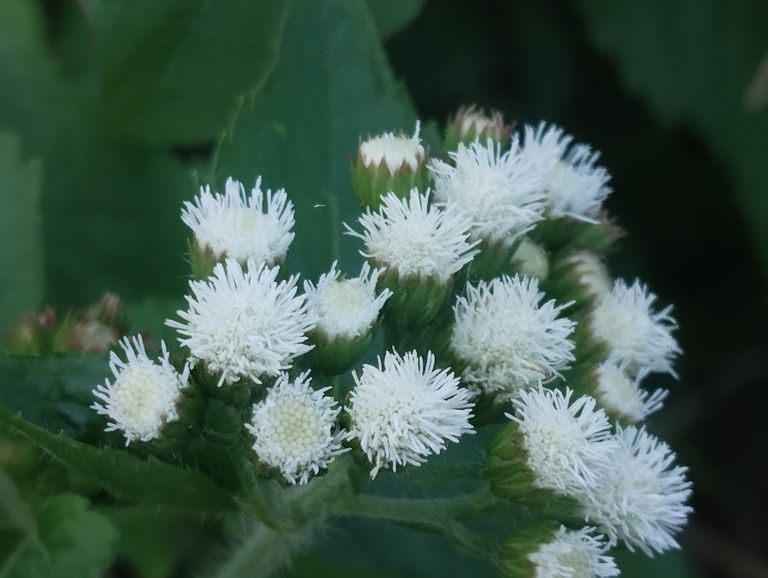
The Disadvantages of Bonophool (Wildflowers)
Bonophool, or wildflowers, often evoke a sense of natural beauty and simplicity. Their vibrant colors and resilience in adverse conditions symbolize freedom and the untamed spirit of nature. However, despite their charm, wildflowers also have certain disadvantages that are often overlooked. In this article, we will explore some of the challenges and downsides associated with wildflowers.
- Invasive Nature
Wildflowers can sometimes become invasive, spreading uncontrollably and disrupting the balance of native ecosystems. Certain species of wildflowers can dominate a region, outcompeting native plants for resources such as sunlight, water, and soil nutrients. This invasion can lead to the decline of native plant species, which in turn affects the animals and insects that depend on them.
- Allergies and Health Hazards
Some wildflowers produce pollen that can trigger allergies in humans. For instance, ragweed, a common wildflower, is known for causing hay fever and other allergic reactions. Additionally, certain wildflowers, such as poison ivy and nettles, can cause skin irritation or other health issues upon contact.
- Agricultural Impact
While wildflowers may seem harmless, they can pose a threat to agricultural lands. Their uncontrolled growth can lead to reduced yields by competing with crops for essential resources. Some wildflower species are also known to harbor pests and diseases that can spread to nearby agricultural fields, further exacerbating the problem.
- Fire Hazards
In dry regions, wildflowers, especially those that dry out during certain seasons, can become a fire hazard. Their dry foliage serves as excellent fuel for wildfires, posing a threat to nearby communities and wildlife habitats.
- Management Challenges
Maintaining a balance between preserving wildflowers and controlling their spread is often challenging. Efforts to manage invasive species can be time-consuming and expensive. In areas where wildflowers grow abundantly, regular monitoring and removal of overgrown patches are necessary to prevent them from causing ecological or economic harm.
- Loss of Biodiversity
Ironically, while wildflowers contribute to biodiversity in some cases, their invasive behavior can lead to its decline. By monopolizing resources, they can reduce the diversity of plant life in an area, which has cascading effects on the entire ecosystem.
- Visual Overwhelm
Although wildflowers are often praised for their aesthetic appeal, their unchecked growth can sometimes lead to visual clutter. In urban or suburban settings, this can detract from the intended landscaping designs, making areas appear unkempt or neglected.
- Potential Harm to Livestock
Certain wildflowers are toxic to livestock. If animals graze in areas with these toxic plants, they can suffer from health issues or even death. This poses a significant problem for farmers and ranchers, who must ensure that grazing areas are free from harmful wildflower species.
Conclusion
While wildflowers have their undeniable beauty and ecological importance, it is essential to recognize their potential downsides. Effective management strategies and awareness can help mitigate these disadvantages, allowing us to enjoy the benefits of wildflowers without compromising the health of ecosystems, agriculture, and human communities.
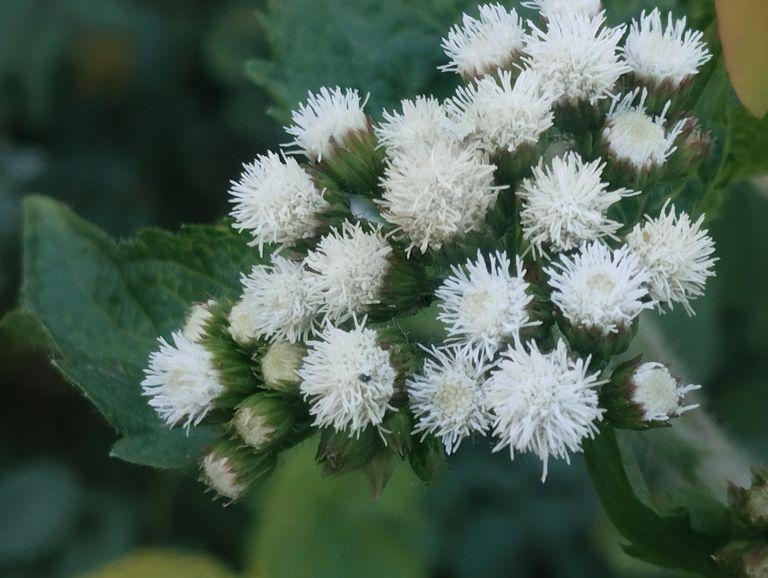
Medicinal Properties of Wildflowers
Wildflowers, often considered nature’s little wonders, have been revered for their beauty and medicinal properties for centuries. These vibrant blooms grow freely in the wild, untamed and unaltered by human cultivation. Beyond their aesthetic appeal, wildflowers harbor a treasure trove of therapeutic benefits, making them invaluable in traditional and modern medicine. This article delves into the medicinal properties of some common wildflowers and their uses.
- Dandelion (Taraxacum officinale)
The humble dandelion, often seen as a weed, is a powerhouse of medicinal properties.
Medicinal Uses:
Detoxification: Dandelion root is a natural diuretic and liver cleanser.
Digestive Health: Its leaves and roots stimulate appetite and aid digestion.
Anti-inflammatory: Contains antioxidants like beta-carotene and polyphenols, reducing inflammation.
Usage: Dandelion tea, tinctures, and capsules are popular for their health benefits.
- Chamomile (Matricaria chamomilla)
Known for its calming properties, chamomile is a beloved wildflower in herbal medicine.
Medicinal Uses:
Sleep Aid: Its sedative properties help in treating insomnia.
Digestive Relief: Effective against indigestion, bloating, and colic.
Skin Healing: Used in creams and ointments to soothe eczema and skin irritations.
Usage: Chamomile tea, essential oil, and topical applications.
- Purple Coneflower (Echinacea purpurea)
This vibrant wildflower is famous for its immune-boosting properties.
Medicinal Uses:
Immune Support: Helps combat colds, flu, and infections.
Wound Healing: Speeds up recovery from cuts and abrasions.
Anti-inflammatory: Reduces swelling and pain in conditions like arthritis.
Usage: Echinacea supplements, teas, and tinctures.
- Yarrow (Achillea millefolium)
An ancient medicinal herb, yarrow has been used for its healing properties for millennia.
Medicinal Uses:
Wound Healing: Its antiseptic and anti-inflammatory properties help treat cuts and bruises.
Digestive Aid: Relieves cramps and promotes healthy digestion.
Menstrual Health: Used to regulate heavy menstrual bleeding.
Usage: Yarrow tea, poultices, and extracts.
- Wild Rose (Rosa rugosa)
Wild roses are more than just a symbol of love; their petals and hips are medicinally significant.
Medicinal Uses:
Vitamin C Source: Rose hips are rich in vitamin C, boosting immunity.
Skin Health: Used in skincare for its anti-aging and moisturizing properties.
Digestive Aid: Helps soothe stomach ailments.
Usage: Rosehip tea, oils, and syrups.
- St. John’s Wort (Hypericum perforatum)
A well-known wildflower with potent medicinal benefits.
Medicinal Uses:
Mental Health: Effective in treating mild to moderate depression.
Pain Relief: Reduces nerve pain and inflammation.
Skin Healing: Used in salves to heal burns and wounds.
Usage: St. John’s Wort tea, capsules, and topical ointments.
- Milk Thistle (Silybum marianum)
This spiky wildflower is a boon for liver health.
Medicinal Uses:
Liver Support: Protects against liver damage and promotes detoxification.
Antioxidant Properties: Reduces oxidative stress in the body.
Cholesterol Management: Helps maintain healthy cholesterol levels.
Usage: Milk thistle supplements and teas.
- Calendula (Calendula officinalis)
Bright orange and yellow calendula flowers are as healing as they are beautiful.
Medicinal Uses:
Wound Healing: Antimicrobial properties promote fast healing of cuts and burns.
Skin Health: Soothes eczema, rashes, and acne.
Anti-inflammatory: Reduces swelling and redness.
Usage: Calendula creams, teas, and tinctures.
- Elderflower (Sambucus nigra)
Elderflowers are a common ingredient in herbal remedies.
Medicinal Uses:
Cold and Flu Relief: Reduces symptoms and boosts immunity.
Skin Care: Used in tonics to improve complexion and treat blemishes.
Anti-inflammatory: Alleviates joint and muscle pain.
Usage: Elderflower tea, syrups, and skincare products.
- Red Clover (Trifolium pratense)
This delicate wildflower is a source of several health benefits.
Medicinal Uses:
Hormonal Balance: Alleviates symptoms of menopause like hot flashes.
Detoxification: Purifies the blood and supports liver function.
Skin Health: Used in treatments for psoriasis and eczema.
Usage: Red clover tea, extracts, and capsules.
Conclusion
Wildflowers are not just pretty faces in the natural world; they are potent healers that have supported human health for generations. Incorporating these wildflowers into your lifestyle can provide a natural way to boost your health and well-being. Always consult a healthcare professional before using wildflower-based remedies, especially if you are pregnant, nursing, or taking medications.
By respecting and preserving wildflowers, we ensure that their legacy as natural healers continues to thrive for generations to come.
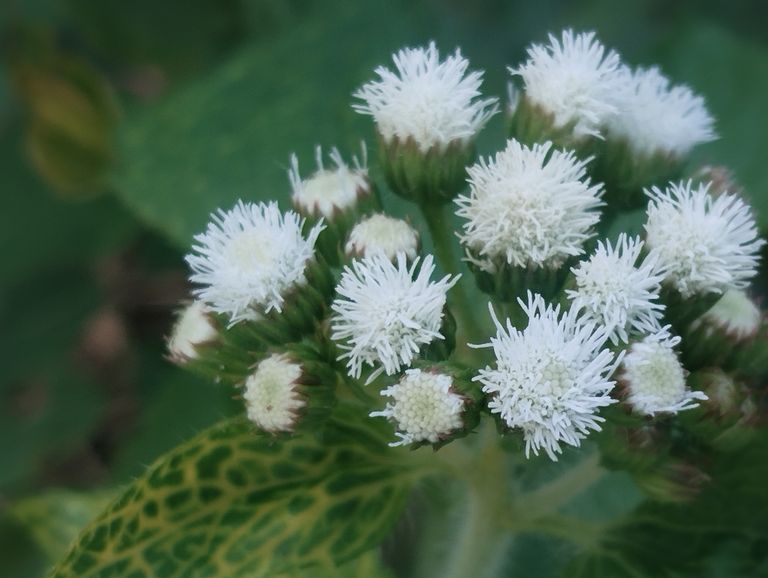
Creating a Garden with Wildflower Plants
Wildflower gardens are a delightful way to add beauty, biodiversity, and a touch of nature's charm to your outdoor space. Unlike formal gardens that rely on cultivated plants, wildflower gardens are inspired by the natural landscapes, featuring native and hardy species that thrive in their local environment. In this blog, we'll explore how to design, plant, and maintain a garden using wildflower plants.
Why Choose Wildflower Plants?
Wildflowers offer numerous benefits to gardeners and the environment. Here are a few reasons why they are worth considering:
- Easy Maintenance
Wildflowers are adapted to thrive in their natural conditions, meaning they require less water, fertilizer, and care than traditional garden plants.
- Support for Wildlife
They attract pollinators such as bees, butterflies, and birds, providing food and shelter for various species.
- Seasonal Beauty
Wildflowers bloom in cycles, ensuring your garden remains vibrant throughout the seasons.
- Eco-Friendly
Using native wildflowers reduces the need for chemical pesticides and fertilizers, contributing to a healthier environment.
Steps to Create a Wildflower Garden
- Choose the Right Location
Wildflowers thrive in areas with plenty of sunlight. Select a location in your yard that receives at least 6-8 hours of direct sunlight daily. If your space is shaded, consider shade-tolerant wildflower species like bluebells or ferns.
- Plan Your Garden Layout
Before planting, decide on the design. Do you want a meadow-like garden or a structured bed with distinct patches of wildflowers? Sketching a rough layout can help organize your planting process.
- Prepare the Soil
Although wildflowers are resilient, preparing the soil ensures better growth. Remove weeds and grass, then loosen the soil using a rake or tiller. You can add compost for nutrients, but avoid over-fertilizing, as wildflowers typically grow in nutrient-poor soils.
- Select Your Wildflower Plants
Choose native wildflowers that suit your region's climate and soil type. Here are a few popular options:
Sunny Areas: Black-eyed Susan, Coreopsis, Coneflowers, and California Poppies.
Shaded Areas: Woodland Phlox, Wild Ginger, and Trilliums.
Wet Areas: Marsh Marigold, Swamp Milkweed, and Joe-Pye Weed.
Dry Areas: Blanketflower, Yarrow, and Lupines.
Mix annuals (flowers that bloom for one season) and perennials (flowers that return year after year) for continuous blooms.
- Sow the Seeds or Plant Seedlings
For a meadow-like effect, broadcast seeds over the soil and lightly rake them in. If you're using seedlings, plant them at the recommended spacing. Water the area gently to help the seeds or plants settle.
- Add Mulch (Optional)
A thin layer of mulch can help retain moisture and suppress weeds, but avoid using too much, as it may prevent seeds from germinating.
Caring for Your Wildflower Garden
Once your garden is planted, follow these steps to ensure it thrives:
- Watering
Water regularly during the first few weeks after planting. Once established, wildflowers typically require minimal watering unless there's a prolonged drought.
- Weeding
Keep an eye out for invasive weeds that may compete with your wildflowers. Hand-pull weeds as needed, especially during the initial growth stage.
- Pruning and Deadheading
Remove spent flowers (deadheading) to encourage new blooms and keep the garden tidy. For perennial plants, cut back dead stems in late fall or early spring.
- Allow Natural Reseeding
Many wildflowers self-seed, ensuring a natural spread and regrowth each year. Allow some flowers to go to seed if you want your garden to evolve naturally.
Incorporating Additional Features
To enhance your wildflower garden, consider adding:
Pathways: Use gravel or stepping stones to create charming walking paths.
Garden Accessories: Place bird feeders, bee hotels, or butterfly houses to attract more wildlife.
Seating Areas: Install a bench or swing for a relaxing spot to enjoy your garden's beauty.
Final Thoughts
Creating a wildflower garden is not just about beautifying your space; it's about fostering a small ecosystem that benefits both the environment and local wildlife. With minimal effort and a thoughtful approach, you can transform your yard into a vibrant, eco-friendly haven.
Start small, observe nature's rhythms, and let your garden grow wild and free—just like the flowers it celebrates!